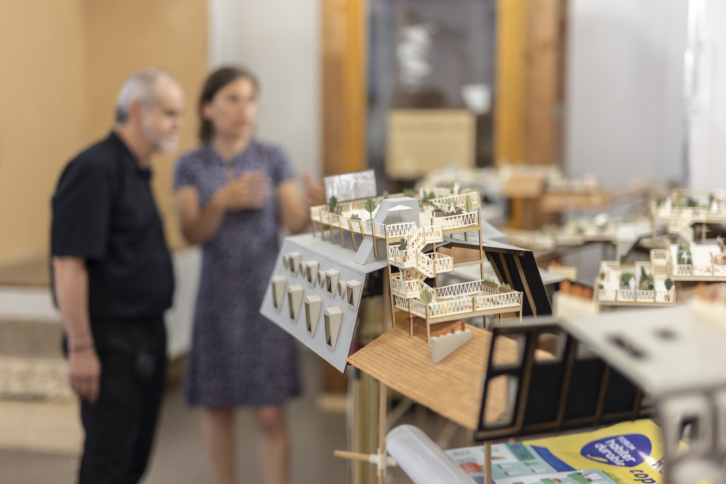
1. Will the 15-minute city only be a success if the different interests of all the stakeholders represented in a district are reconciled and suitable concepts are found through dialogue and if so, how do you ensure that all interests are taken into account?
Mehr über die 15-Minuten-Stadt erfahren: Artikel: Umsetzung der 15-Minuten-Stadt in Paris
Gastbeitrag: Ist die 15-Minuten-Stadt ein geeignetes Leitbild für die Stadt der Zukunft?
The success of the 15-minute city is contingent on the integration of every stakeholder (residents, local economic players, social actors, etc.) within a district, achieved through cohesive dialogue and partnership. Traditionally, our cities, influenced by the principles of the Athens Charter, have been molded by a model centered on productivity and mass consumption, which often led to a dehumanized urban experience.
The 15-minute city seeks to redress this by amplifying the voices of overlooked stakeholders—residents, local businesses, social organizations, and more. This proximity-focused urban model aspires to enhance daily living, cultivating a more fulfilling urban existence. Additionally, the 15-minute city introduces an emphasis on an essential, yet previously neglected stakeholder: our environment and the broader climate. By championing reduced carbon-driven transit and enhancing the integration of nature in our urban landscapes, this approach pushes for increased urban sustainability and resilience.
As with any significant urban transformation, the inception and implementation of the 15-minute city will elicit a spectrum of opinions. It’s natural given that cities are nexuses of intricate and interlaced challenges. Although discussions are inevitable, our primary challenges must be sharply defined. In the face of mounting climate and societal challenges, there’s an emergent call to rethink our urban agendas. Notably, when we place citizens at the center of these initiatives, their interests often resonate with the greater good of our planet. To actualize this vision, it’s imperative that its guiding tenets be collaboratively delineated and fervently endorsed by city leadership
2. Based on your experiences in Paris and other cities, which factors should Hamburg have in mind when realising the concept of the “15-minute-city”?
It is important to bear in mind that the 15-minute city is a holistic concept that aims to bring about a multidimensional transformation: Comprehensive Urban Transformation: The 15-minute city isn’t a singular intervention but a comprehensive urban vision. Urban Spatial Design: This involves recalibrating urban spaces to diminish car dominance, promote pedestrianization, amplify the presence of green spaces, and reclaim public domains for the citizens. Additionally, transportation routes need thoughtful reconfiguration to serve this new paradigm. Economic and Social Vibrancy: Strengthening local commerce and diversifying communal hubs becomes essential. By bolstering neighborhood services and creating diverse gathering spots, the city becomes more self-sufficient and socially vibrant. Lifestyle Evolution: The 15-minute city concept encourages inhabitants to center their daily activities closer to home. This naturally promotes enhanced social interactions, a transformative approach to mobility, and fosters a renewed connection with urban nature. Phased Implementation: While the overarching vision is long-term, its execution should be staggered. It’s feasible to begin with immediate, impactful measures, while concurrently strategizing for medium and long-term shifts. A thorough understanding of the current urban landscape and its dynamics is invaluable in this phased approach. Guiding Principles: Climate-Centric Decision Making: Every decision within this framework should be viewed through the lens of climate resilience and adaptation. As we remodel our cities, the larger narrative of combating climate change should remain front and center. Residents at the Heart: The interests and aspirations of the local residents should be the driving force. Their well-being and enhanced life quality are the ultimate barometers of success. Educative and Participatory Approach: For a seamless transformation, it’s crucial to keep the public informed and involved. Adopting educational initiatives to explain the vision, coupled with participatory methods to include citizen input, ensures a collective movement towards this new urban future.

3. Paris is roughly ten times as densely populated as Hamburg, often by affluent households, so it is much easier to provide all the amenities of a 15 Minute City there than it would be in Hamburg. How can Hamburg ensure that the 15 Minute City doesn’t stay limited to districts that have been 15 Minute cities all along?
Certainly, while Paris’s unique configuration of 17 arrondissements lends itself naturally to a polycentric urban structure, it also presents its own challenges. Each arrondissement, although equipped with services and shops, faces disparities, especially between economically advantaged and disadvantaged districts. Additionally, Paris’s robust public transport framework facilitates pedestrianization, but this doesn’t negate the inherent urban complexities that challenge the 15-minute city ideal.
For a city like Hamburg the approach is not to replicate Paris’s model.
Prof. Carlos Moreno
Yet, the core essence of chrono-urbanism and the ethos of proximity-based urban planning isn’t exclusive to densely populated cities like Paris. Its principles can be adapted and scaled, whether for bustling metropolises or less populated territories, even extending to broader regions (considering a 30-minute territory).
For a city like Hamburg, with a population density less than Paris, the approach is not to replicate Paris’s model but to tailor the 15-minute city concept to its unique urban fabric. True, not every district in Hamburg can mirror the central areas‘ accessibility, but there’s ample opportunity to strategically bolster each neighborhood. The goal is to ensure that even if a certain district doesn’t have every amenity, the essentials—like food, education, recreation, healthcare, and housing—are readily accessible. Beyond that, fostering soft connections, both infrastructural and social, between different districts can create a complementary urban ecosystem where neighborhoods fill each other’s gaps.
Achieving this demands a city-wide strategic vision, recognizing and harnessing the symbiotic interplay between various urban uses and ensuring seamless mobility across neighborhoods.



